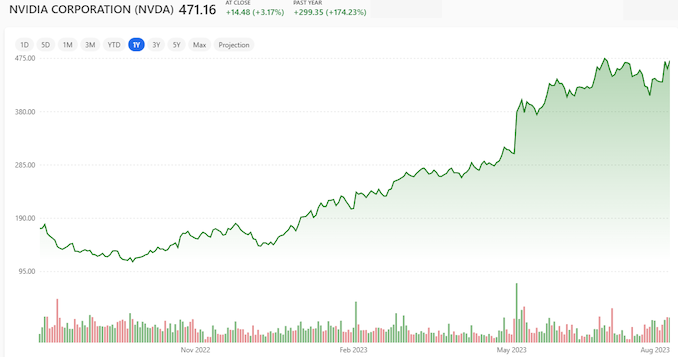D
Deleted member 2197
Guest
Noticed a partnership between MediaTek and Nvidia using chiplet technology ...
NVIDIA Announces Financial Results for Second Quarter Fiscal 2024
NVIDIA today reported revenue for the second quarter ended July 30, 2023, of $13.51 billion, up 101% from a year ago and up 88% from the previous quarter.nvidianews.nvidia.com
- Partnered with MediaTek, which will develop mainstream automotive systems on chips for global OEMs, which integrate new NVIDIA GPU chiplet IP for AI and graphics.
And Ryan Smith speaks ..
As for what NVIDIA is doing with their newfound riches, where they aren’t already investing more into data center GPU production to try to catch up with demand, NVIDIA is sinking their cash into stock buybacks. Already in the midst of a share repurchase program with $3.95 billion left, this week the company’s board of directors has authorized NVIDIA to buy back an additional $25 billion in shares.
Besides bringing NVIDIA slightly more private by removing outstanding shares, this is almost certain to further boost NVIDIA’s stock price, which like the company itself, has been on a tear this year. At the time of their Q1 earnings report, NVIDIA’s stock was hovering around $307 a share, for a market cap of around $755 billion. Now the price is at $471, and in after-hours trading it’s jumped a further 7% to $505 on the back of NVIDIA beating the street on their earnings report. As a result, NVIDIA is closing in on a market capitalization of $1.3 trillion, almost 4x the valuation of rivals AMD and Intel combined.
Last edited by a moderator:

